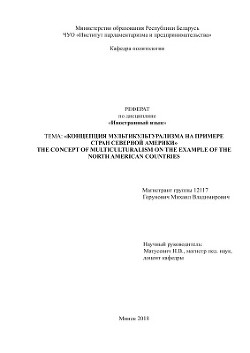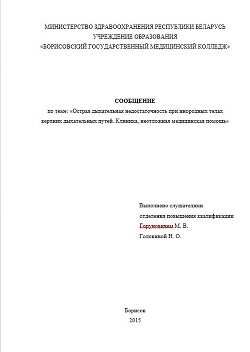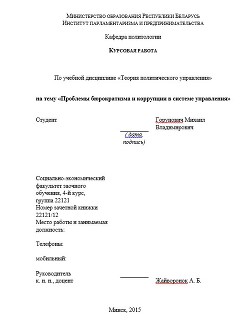1. the struggle for decolonization, concentrated in the period 1948 – 65;
2. the struggle against racial segregation and discrimination, initiated and exemplified by the African American civil rights movement from 1955 to 1965;
3. the struggle for multiculturalism and minority rights, which emerged in the late 1960s.
Each of these movements draws upon the human rights revolution, and its foundational ideology of the equality of races and peoples, to challenge the legacies of earlier ethnic and racial hierarchies. Indeed, the human rights revolution plays a double role here, not just as the inspiration for a struggle, but also as a constraint on the permissible goals and means of that struggle. Insofar as historically excluded or stigmatized groups struggle against earlier hierarchies in the name of equality, they too have to renounce their own traditions of exclusion or oppression in the treatment of, say, women, gays, people of mixed race, religious dissenters, and so on. Human rights, and liberal-democratic constitutionalism more generally, provide the overarching framework within which these struggles are debated and addressed.
Each of these movements, therefore, can be seen as contributing to a process of democratic “citizenization” – that is, turning the earlier catalog of hierarchical relations into relationships of liberal-democratic citizenship. This entails transforming both the vertical relationships between minorities and the state and the horizontal relationships among the members of different groups. In the past, it was often assumed that the only way to engage in this process of citizenization was to impose a single undifferentiated model of citizenship on all individuals. But the ideas and policies of multiculturalism that emerged from the 1960s start from the assumption that this complex history inevitably and appropriately generates group-differentiated ethnopolitical claims. The key to citizenization is not to suppress these differential claims but to filter them through and frame them within the language of human rights, civil liberties, and democratic accountability. And this is what multiculturalist movements have aimed to do.
The precise character of the resulting multicultural reforms varies from group to group, as befits the distinctive history that each has faced. They all start from the anti-discrimination principle that underpinned the second wave but go beyond it to challenge other forms of exclusion or stigmatization. In most Western countries, explicit state-sponsored discrimination against ethnic, racial, or religious minorities had largely ceased by the 1960s and 1970s, under the influence of the second wave of human rights struggles. Yet ethnic and racial hierarchies persist in many societies, whether measured in terms of economic inequalities, political underrepresentation, social stigmatization, or cultural invisibility. Various forms of multiculturalism have been developed to help overcome these lingering inequalities. The focus in this paper is on multiculturalism as it pertains to (permanently settled) immigrant groups, but it is worth noting that struggles for multicultural citizenship have also emerged in relation to historic minorities and indigenous peoples.
1.3 Some important factors affecting the integration of immigrants
There are several factors that can either facilitate or impede the successful implementation of multiculturalism:
1. Desecuritization of ethnic relations. Multiculturalism works best if relations between the state and minorities are seen as an issue of social policy, not as an issue of state security. If the state perceives immigrants to be a security threat (such as Arabs and Muslims after 9/11), support for multiculturalism will drop and the space for minorities to even voice multicultural claims will diminish.
2. Human rights. Support for multiculturalism rests on the assumption that there is a shared commitment to human rights across ethnic and religious lines. If states perceive certain groups as unable or unwilling to respect human rights norms, they are unlikely to accord them multicultural rights or resources. Much of the backlash against multiculturalism is fundamentally driven by anxieties about Muslims, in particular, and their perceived unwillingness to embrace liberal-democratic norms.
3. Border control. Multiculturalism is more controversial when citizens fear they lack control over their borders – for instance when countries are faced with large numbers (or unexpected surges) of unauthorized immigrants or asylum seekers – than when citizens feel the borders are secure.
4. Diversity of immigrant groups. Multiculturalism works best when it is genuinely multicultural that is, when immigrants come from many source countries rather than coming overwhelmingly from just one (which is more likely to lead to polarized relations with the majority).
5. Economic contributions. Support for multiculturalism depends on the perception that immigrants are holding up their end of the bargain and making a good-faith effort to contribute to society – particularly economically.
When these facilitating conditions are present, multiculturalism can be seen as a low-risk option, and indeed seems to have worked well in such cases. Multiculturalism tends to lose support in high-risk situations where immigrants are seen as predominantly illegal, as potential carriers of illiberal practices or movements, or as net burdens on the welfare state. However, one could argue that rejecting immigrant multiculturalism under these circumstances is in fact the higher-risk move. It is precisely when immigrants are perceived as illegitimate, illiberal, and burdensome that multiculturalism may be most needed.
6. Factors Affecting Labour Market Integration of Immigrants. Immigration in the labour market is a critical issue that affects many countries across the globe. The United States and Europe have been the greatest recipients of refugees from various countries over the centuries. Since such immigrants come with the sole purpose of seeking employment, host nations have to work ways of assimilating the immigrants without necessarily affecting the existing political and economic balance. Many factors affect the assimilation and integration of immigrants into the labour market, considering the diversity of the world in terms of religion, politics, and culture. However, the factors that affect the incorporation of various immigrants into the American and European labour market intersect in many aspects. The factors that determine the rate or quantity of refugee incorporation into the American and European labour market relate to both the host country and the refugees themselves.
Several factors force people to migrate and settle in foreign lands where they have to look for employment and other means of survival. The immigrants come with their entire families, which necessitates them to look after the social and economic welfare of their families. Conversely, the host countries mobilize huge resources to ensure that the refugees receive a humane treatment while they look for jobs in various sectors of the economy. Although the refugees ought to look for employment in appropriate areas, the host government is duty-bound in ensuring that all its immigrants are absorbed into the labour market. Besides providing the social services to the immigrants, host countries should ensure that the people who migrate into their countries are accorded the best labour relations according to international best practices. People migrate from their countries to seek asylum in foreign countries because of various reasons ranging from war to economic deprivation.
2. THE REAL EMBODIMENT OF THE POLICY OF MULTICULTURALISM IN THE USA





